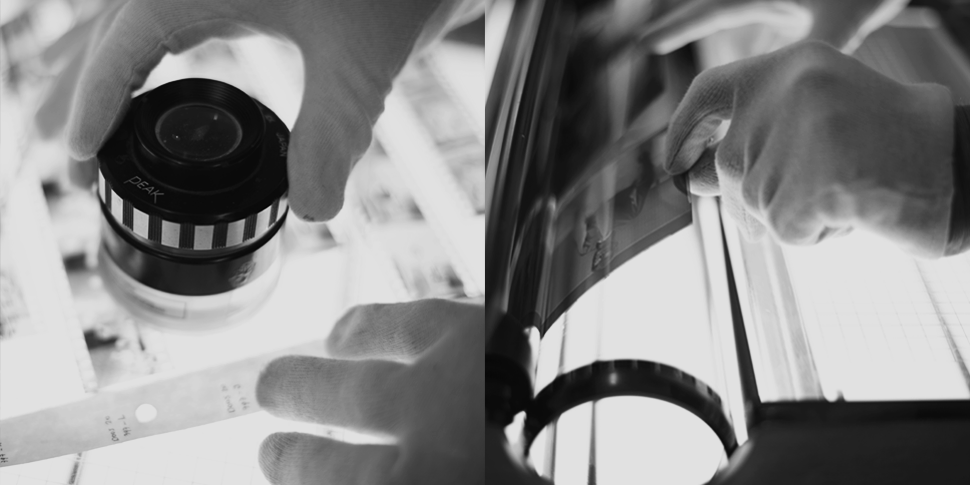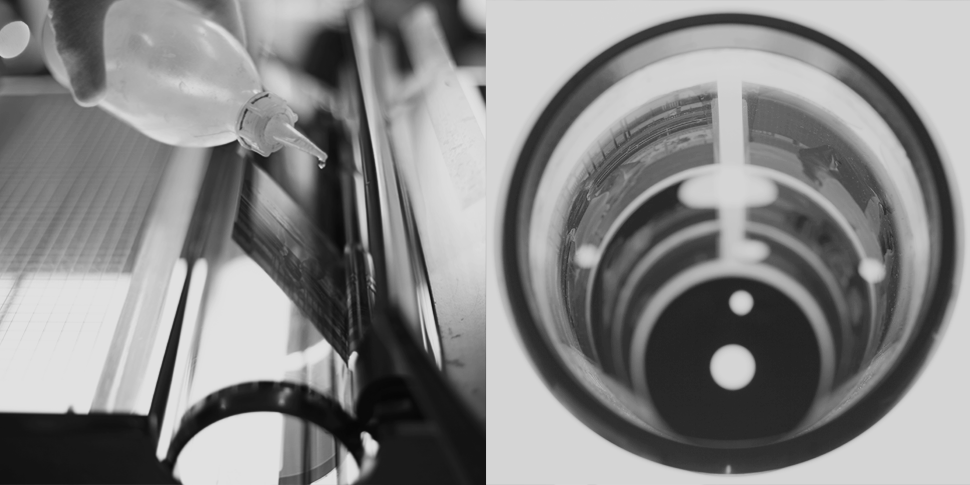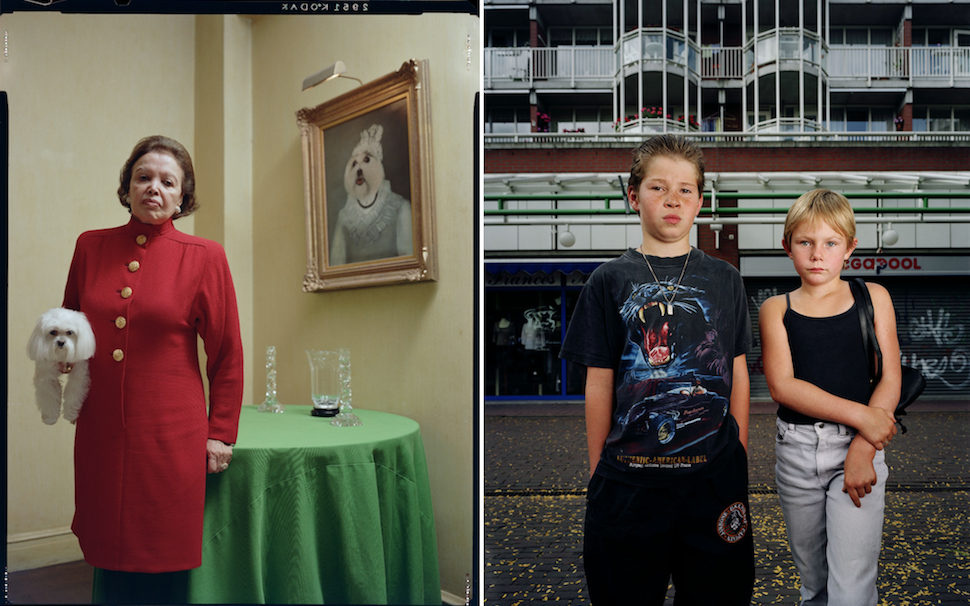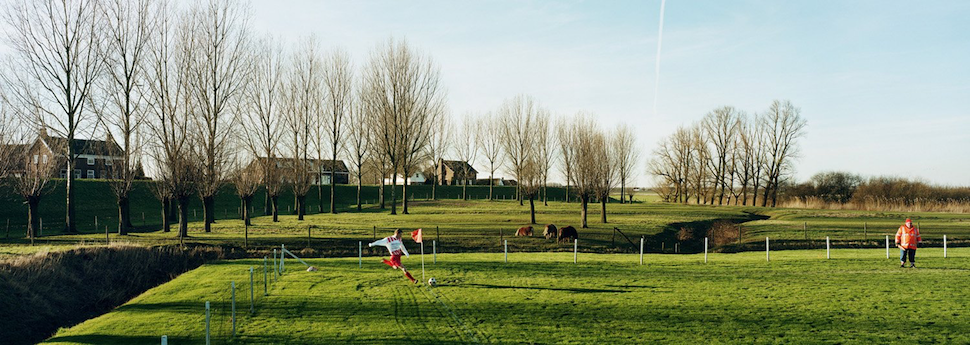Why a drum scan
Drum scanning is without a doubt the best way to digitize your film. All information in your film is scanned while maintaining quality and resolution.

What is a drum scan?
A drumscan is a "high resolution" scan produced by a machine that uses a technique totaly different from the technique used in CCD and Flextight scanners. In a drumscanner an optic pure plexiglas cilinder turns around at high speed. The film is mounted in a special scan fluid. The precision optics of the scanner produces digital information by using 3 PMT's (Photo Multiplier Tubes). This technology provides a much richer detail information in the dark areas as in the high light areas (Dmax). The scan fluid reduces the amount of dust and scrathes. The result of the combination of wet mounting and the very high sensitivity of the PMT's is that every detail is digitilised to the original.

Virtual drumscanners and flatbed scanners
A vitual drum scanner, such as the Flextight, is trying to match the quality of a drum scanner by bending the film during the scanning proces. This method creates improved focusing of the film compared to flatbed scanners. Flextight and flatbed scanners, are using a CCD sensor to digitalize the original. A CCD sensor creates noise and color artifacts that are not in the original film material. Moreover a CCD scanner has a lower D-max value and due to this shadows are less detailed and will show more noise than with a drumscanner in comparison to the original. Those scanners do not use wet mounting, so dust and scrathes will not be reduced. The final scan made by these CCD scanners will be of lower resolution, sharpness, contrast and colordepth.
Why drum scans from Drumscanservice.nl
Drumscanservice.nl scans with Aztek DPL (Digital Photo Lab) the best drum scanner software available for scanning both slides and negatives. This software is specially designed for scanning negative film.
Workflow Technische info

Left: Alice Mason & Fluffy, © Dana Lixenberg. Right: Ordinairy Dutch, © IZARIN and VAN DER LINDE.
Your work is planned, delivery of the scan files takes place in consultation.
When necessary the films will be cleaned before scanning with Kami film cleaner (see also technical info).
The films are mounted on a plexiglas drum, using Kami Mounting Fluid, under an antistatic foil. The Kami Mounting Fluid reduces scrathes and dust (see also technical info).
The drum is being positioned in the scanner. The scanning process is about to begin.
A preview of the drum is being made. Specific unique film characteristics (CMS) are being made for every negative or slide.
The scanner is loaded with these specific CMSs, they are implanted before the analog digital converter. Every negative or slides is being scanned this way. A full non combed histogram is the result.
Color negatives and very grainy black and white negatives are usually scanned at an apperture of 15 microns at 5000 dpi (optical resolution). Slides are usually scanned with an aperture of 5 microns at 5000 dpi (optical rsolution).
The scans are checked for any dust and if neccesary spotted.
After scanning the films will be cleaned with Kami Film Cleaner (see also technical info).
The invoice is being e-mailed to you accompanied with your download information. With this information you can download your scan files from our FTP server.
Film and other materials will be returned to you by courier.

Dutch fields, © Hans van der Meer.
At Drumscanservice.nl we scan with a Howtek 7500. The software used for scanning is Digital Photolab (DPL) by Aztek. This software is written for both slides and negative scanning and uses a CMS system. The Kodak corporate testlab in the US also uses this software.
Film characteristics (CMS)
For every piece of film, slide or negative, an unique and special film charateristic (CMS) is being made by DPL. The CMS created is loaded in to the scanner and is implanted before the analog-digital converter, before it starts a scan job. Only this way a scan with a non combed histogram is being produced. Most drum scanners correct the raw scan after the AD converter. Loss of data and a combed histogram in each scan will be the result.
Film grain vs scan aperture
The film grain of slides and negatives differs from each other. Film grain is influenced by exposure and film development. The scanner aperture is carefuly choosen and is in correspondance with the grain size of the film. When a too large aperture is choosen the scan will be unsharp and with an apeture too small the grain in the scan will be exaggerated and too sharp. Slides and B/W negatives are usually scanned with an aperture of 5-10 microns (optical resolution 5000dpi). Color negatives and very grainy B/W negatives are usually scanned with a larger aperture, 15-20 microns (optical resolution 5000dpi). This way the grain size in the scan is in exact correspondance with the original.
Resolution
We scan at an optical resolution of 5000 dpi, this way all information from the film is digitized into real data.
Colorspace
We use the color space provided by AZTEK (AZTEK V6), a larger color space then Adobe RGB 1998.
Colordepth
We scan out of quality considerations always in 16bit. There is no extra charge.
Scan fluid
We only use 'Kami Mounting fluid', this fluid leaves no residu behind and is guaranteed safe.
Film cleaner
We use only 'Kami Film cleaner', this fluid leaves no residu behind and is guaranteed safe, The film will be cleaned on forehand when neccersary (traces of dirt or fingerprints). After scanning all film material will be cleaned again.
Safe archival
RAID
Besides writing files on Archival DvDs, it is wise to store your files on a RAID system. Files will be stored double on such a system. When one hard disk will stop functioning the data will still be safe on the other hard disk. Store out of safety considerations always your files on another hard disk off site (fire, burglary etc).
